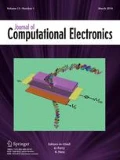Abstract
In this introductory paper I will first go back in history and endeavor to explain in simple terms, with the support of optical diffraction experiments, just how X-ray fiber diffraction pictures lead Watson and Crick to discover the DNA double helix. Second I will present the geometrical and chemical structures of the molecule, the “hardware of life”, emphasizing in some detail the nature of the hydrogen bonding in the Watson–Crick (WC) base pairs A–T, G–C formed by the natural bases of the genetic alphabet. I will then discuss a class of twelve artificial analogues to these bases, some of which have been successfully synthesized by organic chemists by rearranging the pattern of hydrogen bonds of the base pairs. Adopting the perspective of theoretical computer science and error-coding theory, I will finally present DNA as the “software of life”, by discussing Mac Dónaill’s recent interpretation of the optimality of the natural genetic cipher as compared to other possible alphabets selected from the artificial analogues.















Similar content being viewed by others
References
Bohr, N.: On the constitution of atoms and molecules. Philos. Mag. 26, 1–25 (1913)
von Laue, M.: Phys. Z. 14, 421–423; 1040–1041; 1075–1079 (1913)
Bragg, W.L.: The diffraction of electromagnetic waves by a crystal. Proc. Camb. Philios. Soc. 17, 43–57 (1913)
Bragg, W.L.: The structure of some crystals as indicated by their diffraction of X-rays. Proc. R. Soc. (Lond.) A89, 248–277 (1913)
Moseley, H.G.J.: The high frequency spectra of the elements. Philos. Mag. 27, 703–713 (1914)
Polanyi, M.: The X-ray fiber diagram. Z. Phys. 7, 149–180 (1921)
Astbury, W.T., Street, A.: X-ray studies of the structure of hair, wool and related fibers. Philos. Trans. R. Soc. Lond. A230, 75–101 (1931)
Bernal, J.D., Crowfoot, D.: X-rays photographs of crystalline pepsin. Nature 133, 794–795 (1934)
Bernal, J.D., Fankuchen, I., Perutz, M.: An X-ray study of chymotrypsin and haemoglobin. Nature 141, 523–524 (1938)
Bohr, N.: Light and life. Nature 131(421–423), 457–459 (1933)
Delbrück, M.: Light and life III. Carlsberg Res. Commun. 41(6), 299–309 (1976)
Stent, G.: Light and life: Niels Bohr’s legacy to contemporary biology. Science 160, 384 (1968)
Watson, J.D.: The Double Helix. Athenaeum, New York (1968)
Mac Dónaill, D.A.: A parity code interpretation of nucleotide alphabet composition. Chem. Commun. 18, 2062–2063 (2002)
Mac Dónaill, D.A.: Why nature chose A, C, G and U/T: an error-coding perspective of nucleotide alphabet composition. Orig. Life Evol. Biosph. 33, 433–455 (2003)
Mac Dónaill, D.A .: IEEE Engineering in Medicine and Biology Magazine, Jan–Feb (2006)
Maddox, B.: Rosalind Franklin—The Dark Lady of DNA. Harper Collins, London (2002)
Judson, H.F.: The Eighth Day of Creation. Penguin Books, London (1979)
Olby, R.: The Path to the Double Helix. The Discovery of DNA. Dover Publications, New York (1994)
Fuller, W.: Who said “Helix”. Nature 424, 876–878 (2003)
Wilkins, M.H.F., Stokes, A.R., Wilson, H.R.: Molecular structure of nucleic acids: molecular structure of deoxypentose nucleic acids. Nature 171, 739 (1953)
Franklin, R., Gosling, R.G.: Molecular configuration in sodium thymonucleate. Nature 171, 740–741 (1953)
Franklin, R., Gosling, R.G.: The structure of sodium thymonucleate fibres. I. The influence of water content. Acta Cryst. 6, 673–677 (1953)
Crick, F.H.C.: What Mad Pursuit. Basic Books-Harper Collins, New York (1988)
Langridge, R., Seeds, W.E., Wilson, H.R., Hooper, C.W., Wilkins, M.H.F., Hamilton, L.D.: Molecular structure of deoxyribonucleic acid (DNA). J. Biophys. Biochem. Cytol. 3, 767 (1957)
Chargaff, E.: Chemical specificity of nucleic acids and the mechanism of their enzymatic degradation. Experientia 6, 201–209 (1950)
Watson, F.W., Crick, F.H.C.: A structure for deoxyribose nucleic acid. Nature 171, 737–738 (1953)
Bragg, W.L.: A new type of “X-ray Microscope”. Nature 143, 678 (1939)
Bragg, W.L.: Lightning calculations with light. Nature 154, 69–72 (1944)
Lucas, A.A., Lambin, P.H., Mairesse, R., Mathot, M.: Revealing the backbone structure of B-DNA from laser optical simulations of its X-ray diffraction diagram. J. Chem. Educ. 76, 378–383 (1999)
Lucas, A.A.: Rosetta stone of the genetic language. Int. J. Quantum Chem. 90, 1491–1504 (2002)
Lucas, A.A.: A -DNA and B-DNA : comparing their historical X-ray fiber diffraction images. J. Chem. Educ. 85, 737–744 (2008)
Lucas, A.A., Lambin, P.: Diffraction by DNA, carbon nanotubes and other helical nanostructures. Rep. Prog. Phys. 68, 1181–1249 (2005)
Shugar, D.L., Kierdaszukl, B.: New light on tautomerism of purines and pyrimidines and its biological and genetic implications, Proc. Int. Symp. Biomol. Struct. Interactions, Suppl. J. Biosci. 8, 657–668 (1985)
Manoj, K.S., Leszczynski, J.: Tautomerism in nucleic acid bases and base pairs: a brief overview. WIREs Comput. Mol. Sci. 3, 637–649 (2013)
Arunan, E., et al.: Defining the hydrogen bond: an account (IUPAC Technical Report). Pure Appl. Chem. 83, 1637–1641 (2011)
Gilli, G., Gilli, P.: The Nature of the Hydrogen Bond: Outline of a Comprehensive Hydrogen Bond Theory, Published to Oxford Scholarship Online: September 2009. Print ISBN-13: 9780199558964
Piccirilli, J.A., Krauch, T., Moroney, S.E., Benner, S.A.: Enzymatic incorporation of a new base pair into DNA and RNA extends the genetic alphabet. Nature 343, 33–37 (1990)
Yang, Z., Hutter, D., Sheng, P., Sismour, A.M., Benner, S.A.: Artificially expanded genetic information system: a new base pair with an alternative hydrogen bonding pattern. Nucleic Acids Res. 34(21), 6095–6101 (2006)
Benner, S.A., Yang, Z., Chen, F.: Synthetic biology, tinkering biology, and artificial biology. What are we learning? C. R. Chim. 14, 372–387 (2011)
Szathmary, E.: Perspectives nature reviews. Genetics 4, 995 (2003)
Lee, J.J. http://newswatch.nationalgeographic.com/2013/04/11/francis-cricks-letter-to-son-describing-dna-auctioned/. Accessed 11 Apr 2013
Crick, F.H.C.: The origin of the genetic code. J. Mol. Biol. 38, 367–379 (1968)
Acknowledgments
This paper is dedicated to the memory of my dear friend and colleague, the late geneticist Jean Vandenhaute of the University of Namur, Belgium. I thank my colleagues, professors Guy Maghuin and Jacques Pasteels for reading critically this manuscript and for many discussions on its subject.
Author information
Authors and Affiliations
Corresponding author
Rights and permissions
About this article
Cite this article
Lucas, A. DNA: hardware and software of life. J Comput Electron 13, 781–793 (2014). https://doi.org/10.1007/s10825-014-0570-3
Published:
Issue Date:
DOI: https://doi.org/10.1007/s10825-014-0570-3




